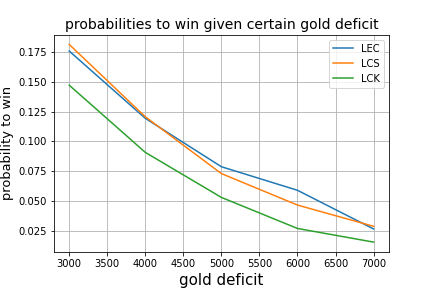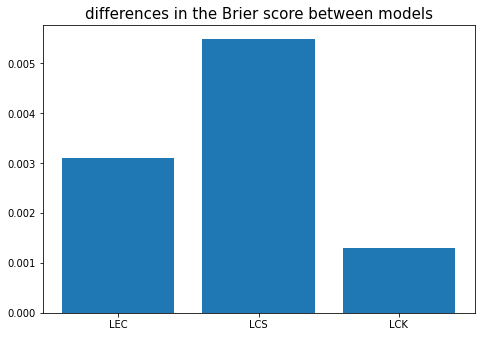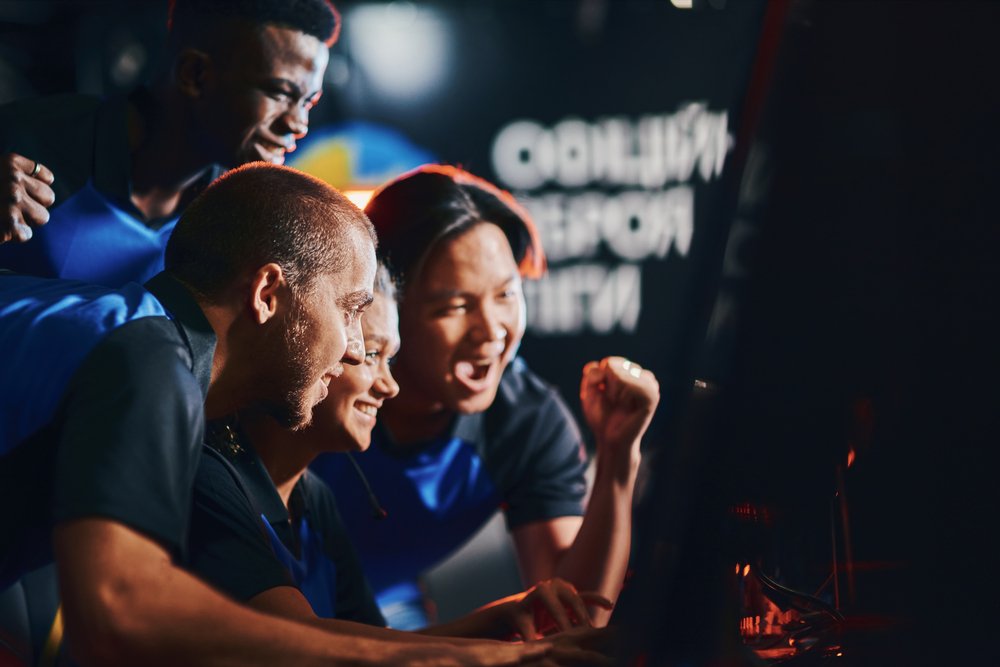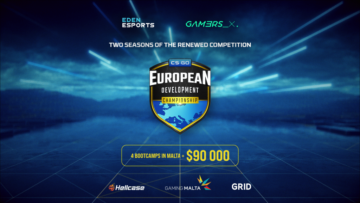Former professional League of Legends (LoL) player and Bayes Data Scientist, Gaweł Paprzycki, analyses the probability of achieving a comeback in LoL.
Using data, he breaks down how those probabilities differ amongst regions — and why that matters to industry.
Looking at data region by region
The professional League of Legends ecosystem is primarily split into twelve regional leagues, with teams competing within those leagues to qualify for large-scale events like the World Championships or MSI.
Within the title’s competitive structure, four regions are considered to be the most prominent: Europe, South Korea, China, and North America. However, how different are the regions when it comes to strengths, weaknesses and playing styles? Whilst this conversation may seem gratuitous, it’s actually incredibly important for a variety of sectors, such as the betting and data industries.
With access to official historic LoL data going back several years, Bayes Esports has studied the different regions to provide an insight into these competitions. League of Legends is largely a resource-oriented game, hence the first factor looked at was gold and how much impact it has on the teams’ gameplay. In particular, we studied how gold impacts the probability of winning a game in the European (LEC), Korean (LCK) and North American (LCS) leagues.
For each league, Bayes considered games played by teams in 2021 and 2022. International events, where teams from different regions face each other, have been excluded as part of this analysis.

For all regions, gold is positively correlated with winning, but the certainty of a team’s victory is not the same. Comebacks do happen, but how often it happens differs from region to region. The plot above highlights how often teams came back from a disadvantage, split by the leagues they were playing in. At a 5000 gold disadvantage, only 5% of the teams in the LCK came back to win, compared to 7.5% of teams in the LEC and LCS. Statistically speaking, this is a significant difference.
Does this mean that Korean teams give up too easily? Not necessarily. There are many reasons why this statistic is prominent, such as the level of competition and general playstyle of the region. In the end though, there is no definitive answer. Blatantly claiming this would be misinterpreting the data, as often happens when analysts are not familiar enough with the subject matter.
While judging is not the job of a betting odds provider, predicting the winner certainly is. If the likelihood of a team coming back is different depending on region, the betting odds should reflect that. It’s crucial to catch the subtle differences in order to make betting models stand out.

To continue with the gold example, this information can then be utilised to improve predictions. Using the same features, one of them being gold difference, Bayes Esports trains models separately for each of the three regions. These data models are then tested, highlighting a situation where one team is between 4000 and 6000 gold down. The performance metric is then recorded as a Brier score — a metric to measure prediction accuracy. If the score is zero, the model returns perfect predictions every time.
Perfect predictions are, of course, unlikely. In fact, models should allow for the probability of a comeback as it provides more information that can be relayed to potential betting clients, thus reducing the unpredictability of an upset victory.
In the plot below we have only the differences in the score — and indeed, the winner predictions for LEC and LCS are lower. The model is less certain about who is going to win, which results in lower odds for the losing side and less risk for the odds provider. If factors such as comebacks are not filtered into the equation, it runs the risk of providing inaccurate odds that could prove costly for bookmakers.

We’re only scratching the surface of how data is collated to ensure that betting providers offer correct odds. There are many other subtle differences that we can find between regions. When looking further into the likelihood of making a comeback, it’s important to remember that the datasets become around twenty times smaller when looking at each region individually. Patches also make analyses more complex. Research of this kind becomes a balancing act between genuine improvement and overfitting, but it is definitely worthwhile.
At Bayes Esports, we continue to utilise our unique understanding of the esports industry to provide some of the best odds in the market. Notable partners include the likes of ESL Gaming and Riot Games, two of the biggest publishers in esports. Examples like this continue to highlight the importance of providing and gathering trustworthy data, and how all facets of the esports sector — ranging from betting to tournament operation — see its value.
Disclaimer: Gaweł Paprzycki has since left his position as Bayes’ Data Scientist.
Written in collaboration with Bayes Esports
- amazon prime gaming
- asia
- axie infinity
- Bayes Esports
- Casino Games
- coingenius
- commercial
- data
- EA Sports
- Esports Insider
- Europe
- Evil Geniuses
- Features
- Gambling
- Games
- Gaming
- gaming headset
- gaming pc
- insights
- Latest News
- league of legends
- madden nfl
- Markets
- MOBA
- Nintendo
- north america
- Online casino games
- pc games
- plato
- plato ai
- plato data intelligence
- plato game
- plato gaming
- platodata
- platogaming
- playstation
- prime gaming
- Team SoloMid
- xbox
- zephyrnet













